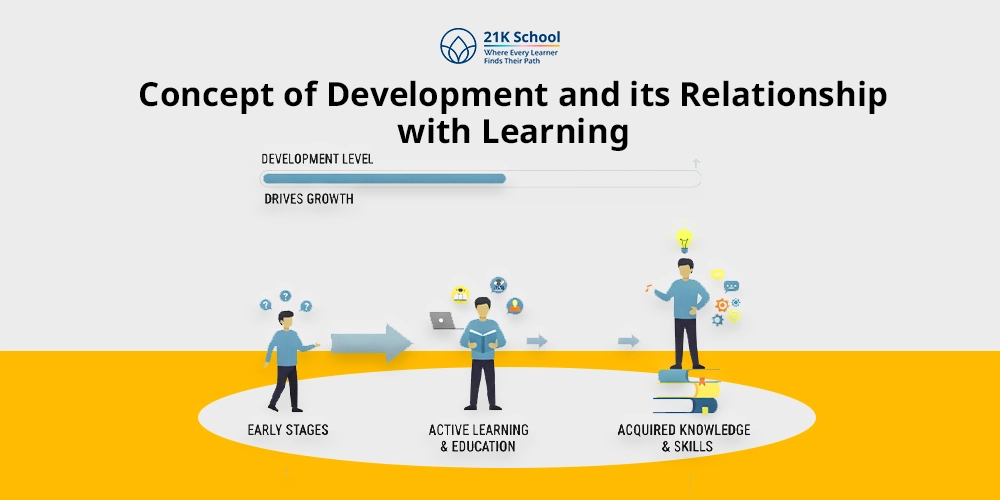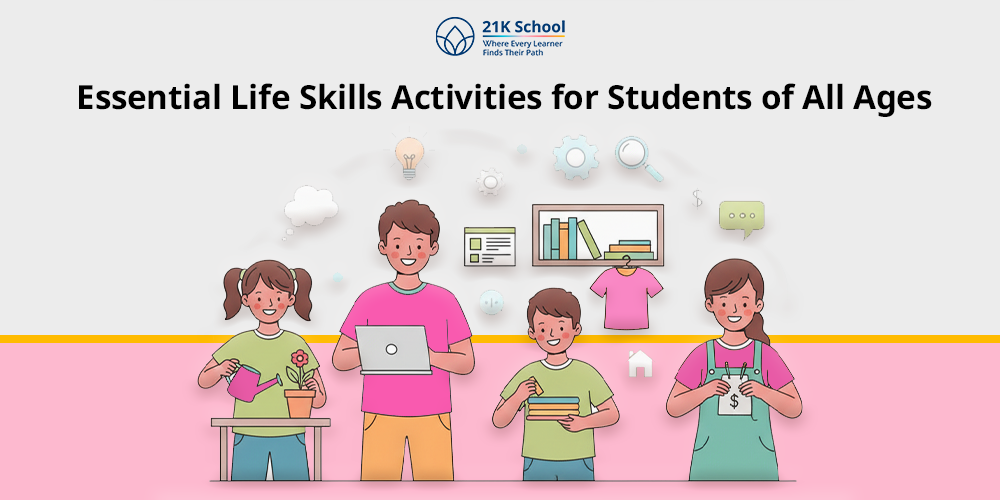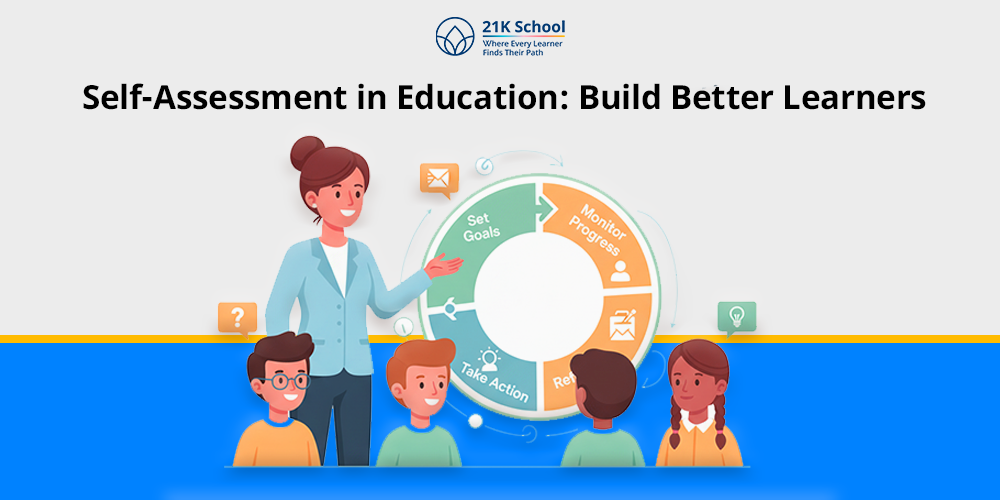
It is common to see children learn according to their age and rate of development.
Development ensures that as a growing person, we attain our maximum potential and grow in all aspects of life. Learning aids in this.
But, if we provide learners with inappropriate levels of teaching and instruction, they might lag in many levels of development.
This is why this article dives into the real concepts of development and learning for teachers and parents, and tells you how they relate to provide holistic education.
Table of Contents
Concept of Development
Development can be termed as a methodical and gradual sequence of alterations that the individual goes through in a process from conception to death.
These are physical, intellectual, emotional and social abilities.
The line of development follows the quantitative change as the growth of height or weight.
Along with it, it encompasses the qualitative one like better reasoning, emotional control, and morality.
Development is a process that is constantly affected by heredity (biological) and the environment (social and cultural experiences).
It has a systematic and predictable course, where changes in pace and degree vary according to individuals.
The knowledge of development concepts in teaching allows educators to be aware of the requirements, capabilities and the weaknesses of students in various stages of their development.
Characteristics of Development
The main features which show development of individuals as they grow are as:
- Development is Lifelong: It starts at conception and proceeds in life. Every developmental level is based on the last and preconditions for the next developmental level.
- Orderliness of Development: It moves towards general to specific, simple to complex, and head-to-toe (cephalocaudal), center-to-periphery (proximodistal).
- Process of Development is Ongoing: Even though the changes are not constant, development is spread over a period and never indicates that it takes a jump.
- Development Proves to be Varied: There is no uniformity in the development of two individuals. These variations depend on factors such as heredity, environment, health, as well as, cultural context.
- Development is About Growth and Decline: Although childhood and adolescence are characterized by an intense rate of growth, the later adulthood period may be characterized by the deterioration of some capacities.
- Development is Multidimensional: It is a combination of physical, cognitive, emotional, social and moral changes.
- Heredity and Environment Influence Development: Limits are imposed by things that are genetic and the extent to which one is likely to achieve the potential are influenced by the environment.
Types or Domains of Development
The development of the body affects multiple areas, which speaks for the varied types of development.
You will find these domains as:
- Physical Development: Refers to alterations of the body structure, motor abilities, child brain development, and sensory abilities. It influences stamina, coordination and health which is vital in active learning.
- Cognitive Development: Includes acceptance of what happens in the mind such as in perception, memory, reasoning, problem-solving, and language. The theory by Piaget revolves around the way children reason and perceive the world.
- Emotional Development: Implicates the identification, expression and the management of emotions. Motivation and self-regulation in learning requires emotional stability.
- Social Development: Points to the presence of social skills to cooperate and establish relations with people, adapt to the conventions of the group, and evolve compassion and collaboration.
- Moral Development: Concerns attitudes toward what is right and wrong, moral conduct and the internalization of social values as stated by Kohlberg.
- Language Development: Includes language acquisition and language use. It is a key component in learning particularly in the theory of Vygotsky.
Concept of Learning
Learning is a fairly stable change in conduct or knowledge that happens because of the experience, training or practice.
It is more than just rote memorization, rather an understanding, application and adjusting knowledge to new circumstances.
Learning is either intentional or incidental, formal or informal and cognitive, affective or psychomotor.
Various factors of the way learning occurs have been studied by different psychologists like Skinner, Bandura, Piaget, and Vygotsky.
The major characteristics of learning are:
- It causes a behavioral or an understanding change.
- It is based on experience and contact with the surrounding.
- It is imperative and a catalyst for change.
- It differs among people based on motivation, intelligence as well as environment.
Relationship Between Development and Learning
Development and learning are related in a complex and interdependent way.
The two processes are mutually dependent and simultaneous, though scholars have differed on deciding the direction and nature of the dominant one.
1. Sequential Relationship: Learning Follows Development (Piaget’s View)
Learning is the result of development, as per Piaget’s theory.
The are levels of cognitive development of children, stated as sensorimotor, preoperational, concrete operational, and formal operational.
Every stage is a qualitative change in thinking and the way children perceive the world.
As Piaget stated, the child is only able to learn some certain concepts when they are in the stage of cognitive development.
An example is that a child in the concrete operational stage has the ability to understand conservation of quantity but fails to master abstract algebra.
Therefore, it is the responsibility of teachers to create activities that are in line with the learning stage of a learner.
Taking a child and forcing him/her to study something too early in their developmental stages results in memorizing with no comprehension.
2. Interactive Relationship: Learning Drives Development (Vygotsky’s View)
Lev Vygotsky assumed that learning precedes, and activates development.
He focused on the use of social interaction, language and culture in cognitive development.
Vygotsky believed that the optimal place where children can learn is the Zone of Proximal Development (ZPD).
ZPD is the gap between what a learner can do independently and what they can achieve with guidance from someone more skilled.
Children are able to learn to do and teach something new through cooperation with more learned individuals (teachers, peers, parents). Later these things turn into their cognitive tools.
This means that the child is not restricted to the level of his/her development but learning is a prompt to further development.
3. Reciprocal Relationship: Learning and Development Support Each Other
Contemporary educational psychologists understand the connection existing between learning and development to be a two-way change.
Development gives us the framework and ability to learn, and learning brings structure and advancement.
To illustrate, the maturity of the cognitive capacities allows children to learn better; and with the acquisition of new abilities; their cognitive, emotional and social capacities develop.
It is on the basis of this mutual relationship that modern day practices of education have been founded.
This strikes the right balance between developmental suitability and learning experience that are challenging.
Educational Implications of the Relationship Between Development and Learning
The relationship establishment between learning and development forges educational implications, which sums as:
1. Developmentally Appropriate Curriculum
The learners should have courses that are aligned with their developmental levels.
The activities should be simple or complex, as per the child, considering his cognitive and emotional preparedness.
2. Readiness to Learn
Prior to introducing the new concepts, educators must put into consideration the assessment of the students developmental readiness.
Studying works best when based on the previously acquired skills and experience.
3. Role of Social Interaction
According to the ideas provided by Vygotsky, group work, peer learning and discussions should be promoted.
Interaction with others improves the comprehension level and facilitates collaborative learning.
4. Use of Scaffolding
The process of scaffolding is where teachers come in as facilitators or guides while children aim to learn a new skill/concept.
They begin by offering support structures (scaffolds) in the form of hints, examples or demonstrations to aid the learners for the progress in their ZPD.
The support is gradually removed as learners become independent. While the term “scaffolding” was actually introduced by Wood, Bruner, and Ross in 1976, not by Vygotsky himself, though it has become closely associated with his ZPD concept.
5. Continuous Assessment
Assessments should be continuous and formative.
This assists the teachers in tracking the developmental advancements for modifying teaching methods.
The beginning or the end assessments can misguide the teachers from providing structured assistance.
6. Focus on Holistic Growth
Learners should be given education that comprises more than academic achievements.
It should be an attempt at achieving holistic growth, including intellectual, emotional, social, moral, and physical development.
Factors Influencing Development and Learning
Development and learning are products of many factors and they affect how a child grows.
We will discuss these factors below.
- Heredity: Physical traits, and intellectual and emotional development depends on genetic composition.
- Environment: The experiences are influenced by family, school, community, and culture, which affect the learning and development.
- Nutrition and Health: Proper physical and cognitive functioning is only possible with proper nutrition and good health.
- Socioeconomic Status: Children have access to educational resources, stimulants, and parental engagement which differ based on economic background.
- Motivation and Interest: Both intrinsic and extrinsic motivation have a direct influence on the learning outcomes and persistence.
- Language and Communication: Language is one of the most effective tools of thinking and learning, the exposure to language affects intellectual development.
- Emotional Climate: An encouraging and stress free environment brings curiosity, confidence, and improved learning.
- Cultural Factors: Culture provides some direction to what and how children learn.
Concluding Thoughts
Development and learning are highly interdependent on one another, thus leading to real and whole growth of individuals.
Different researchers and psychologists like Vygotsky, Piaget, and others, formulated these relationships in different ways.
With these teachers could support learners in learning, and formulate lessons and instructions that facilitate cognitive, and socio-emotional development.
Finally, education must bring up the full development of children.
This implies learning new things, gaining knowledge, to grow, to become a completely competent and responsible person.



